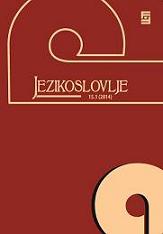Position of the German attributive genitive and other questions related to the structure of the genitive substitute von + NP
Position of the German attributive genitive and other questions related to the structure of the genitive substitute von + NP
Author(s): Alja Lipavic OštirSubject(s): Language and Literature Studies
Published by: Filozofski fakultet, Sveučilište Josipa Jurja Strossmayera, Osijek
Keywords: genitive; genitive substitute; morphological genitive; German; grammaticalization
Summary/Abstract: The article presents an attempt at explaining the German genitive substitute von + NP as the result of a grammaticalization process. The explanation takes into account paradigmatic and syntagmatic grammaticalization parameters (Lehmann 1995), analysed with the text corpus from Old High German to the second half of the 19th century. Since the structure von + NP is a genitive substitute for the morphological genitive, both structures underwent a process of grammaticalization during the historical development. The complete picture of the degree of grammaticalization of a structure is represented by the results of the analysis according to all of the parameters. The integrity and the scope of von + NP are two only partly applicable parameters, connected with the entrance into the grammaticalization channel. The genitival substitute von + NP has a wider scope in comparison with the morphological genitive, which is a sign of a lower degree of grammaticalization. The other four parameters show a more or less consistent picture with regard to the morphological structure or the diachronic component. Of particular importance is the comparison which shows a higher grammaticalization degree of the morphological genitive according to five parameters. The diachronic component is also important: the genitival substitute von + NP is not as highly grammaticalized as the morphological genitive, but in its development it went through progressive grammati-calization. Although its degrees of that process cannot be defined as structure-changing, they can be described in a precise way. The first degree is the entrance into the grammaticalization channel, i.e. the occurrence of the structure (Old High German). In the subsequent centuries the structure remained relatively constant, with only a few factors indicating change: the fusion and the positioning in the nominal phrase, the latter not entirely fixed. The most prominent changes of the structure that occurred during this process are its distribution and frequency. Both can be associated with text types and language varieties. The corpus analysis is complemented by the analysis of the semantic aspects of the German morphological genitive and the genitive substitute von + NP.
Journal: Jezikoslovlje
- Issue Year: XV/2014
- Issue No: 1
- Page Range: 1-25
- Page Count: 25
- Language: English

